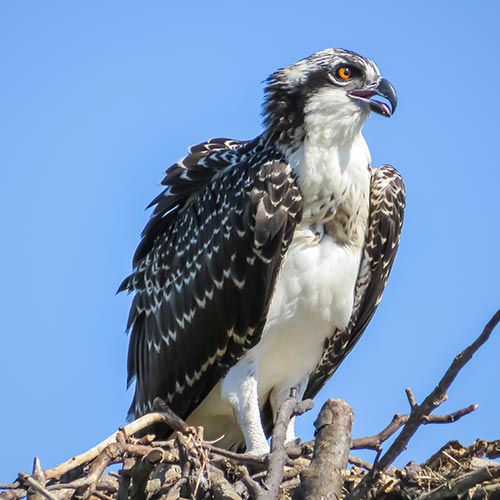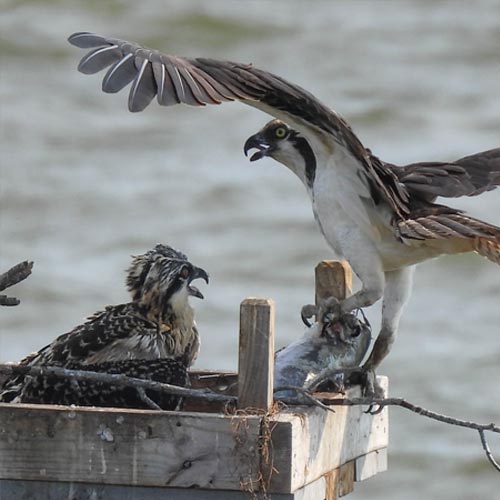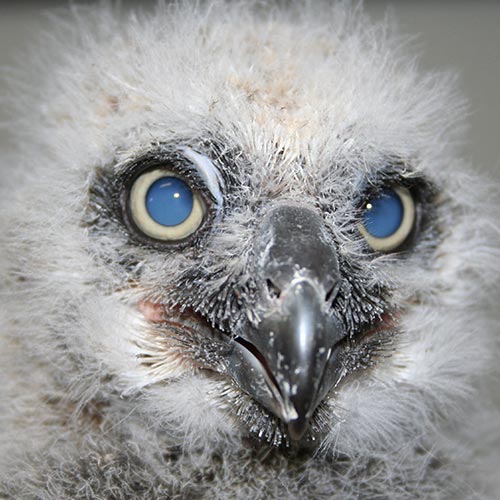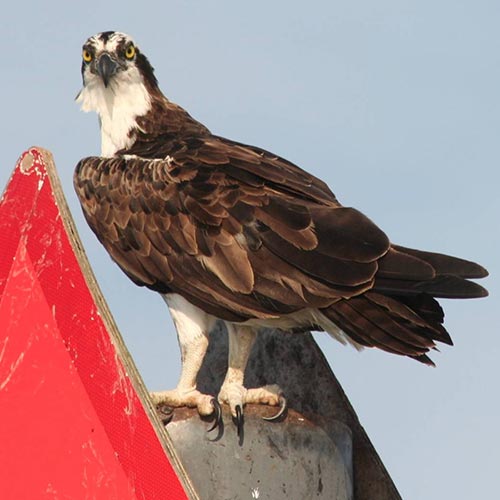Osprey Watch is an international data collection website dedicated to recording the daily “ins and outs” of the osprey nesting cycle. CBEC’s volunteers have participated in osprey watching and data collection for the past several years. The Osprey Watch website is operated under the auspices of College of William and Mary, and provides data for researchers investigating climate change, pollutants in aquatic environments and the fish population. Whether osprey are able to successfully rear their young indicates the overall health of an aquatic environment.
Participating in Osprey Watch data collection involves CBEC volunteers watching ospreys from their return from migration through the fledging and ultimately their departure to wintering grounds. This encompasses the period from March through August.
Volunteers select a nest platform on CBEC’s site and “watch” for the birds to return and undergo the nesting cycle. The “watchers” select a time and a day for their observations and record what they see on the Osprey Watch website.
Examples of their records include:
- Date of adult bird arrival
- Nest building and mating activity
- Incubation
- Hatching date
- Number of nestlings
- Date of departure for wintering grounds
Other interesting data is recorded as notes and comments. It’s fun to watch the birds go through the cycle, and there is a lot of learning to be had!
Prior to volunteering for Osprey Watch, CBEC provides training for the citizen-scientists about the behavior of the birds and what activities they are looking for, so they can discern what is going on.
The volunteers participating in Osprey Watch contribute valuable information about osprey populations and behavior that supports the overall health of our aquatic ecosystems. According to William and Mary College’s Osprey Watch mission, “the Osprey Watch is to collect information on a large enough spatial scale to be useful in addressing three of the most pressing issues facing aquatic ecosystems, including global climate change, depletion of fish stocks, and environmental contaminants.”
Osprey platforms are also observable by kayak, if you want to spend some time on the water. Grab your binoculars and take a seat near one of CBEC’s osprey platforms during the nesting cycle, and become a citizen scientist contributing information about the birds that serves as an environmental indicator and beauty on wing for CBEC.




